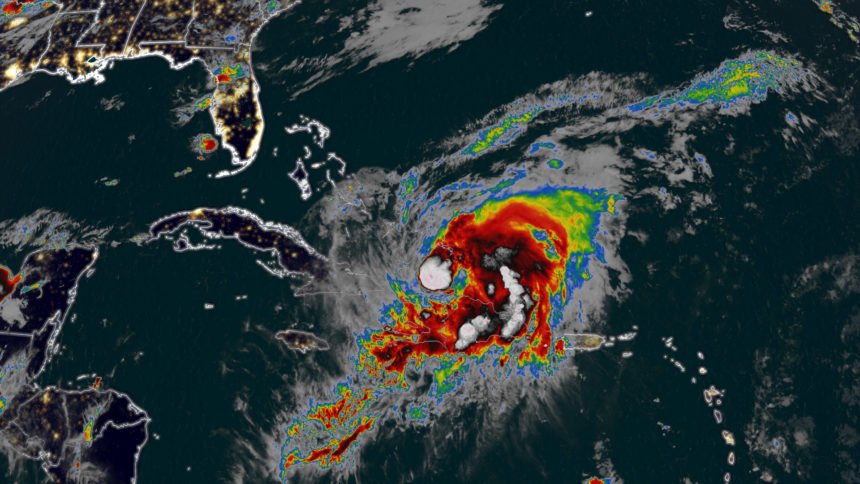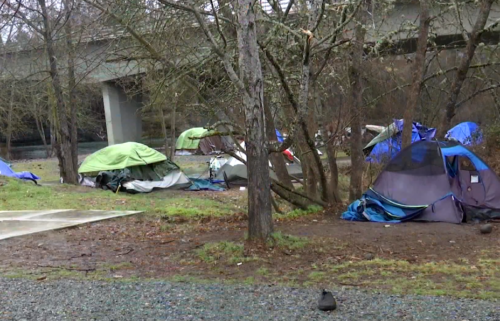Hurricane Isaias heads toward Bahamas and Florida

After battering Dominican Republic as a tropical storm
(CNN) -- The Bahamas and eastern Florida are bracing for hurricane conditions this weekend as Hurricane Isaias barrels through the Caribbean and into the southeastern US.
The center of Isaias was moving over the central Bahamas Friday night. It will move near the northwestern part of the island nation Saturday and is expected to track near the east coast of Florida's peninsula Saturday afternoon and Sunday, according to the National Hurricane Center.
Water levels in the Bahamas may rise 3 to 5 feet above normal tide levels because of Isaias, the NHC said. Parts of Florida -- Jupiter Inlet to Ponte Vedra Beach and North Miami Beach -- could see water levels reaching up to 4 feet above ground.
Isaias, which has 80 mph winds, could also drop up to 8 inches of rain on the Bahamas and up to 6 inches of rain on Florida, the NHC said. As the storm moves up the Atlantic coast of the US, the eastern Carolinas and parts of Virginia are expected to see minor river flooding.
A hurricane watch is currently in effect for northwestern and central Bahamas as well as the Boca Raton to the Volusia/Brevard County Line in Florida. A hurricane warning means that hurricane conditions are expected somewhere within the warning area.
Despite not knowing the exact path of the storm, states are preparing. North Carolina Gov. Roy Cooper and Virginia Gov. Ralph Northam both declared a state of emergency Friday ahead of the storm.
On Thursday, Isaias' exterior slammed Puerto Rico before it went over the Dominican Republic, all as a tropical storm. It left 300,000 to 400,000 people without power in Puerto Rico, National Weather Service San Juan meteorologist Gabriel Lojero told CNN.
It dropped 5 to 10 inches of rain, triggering flash floods and mudslides on the island, Lojero said. One woman went missing after her car was swept away, he said.
"A lot of neighborhoods were submerged under water," Lojero said.
More rain is expected Friday in the Dominican Republic and Haiti; by storm's end, up to 12 inches of rain could have accumulated in some areas there, the NHC said.
A storm threat during a pandemic
Florida closed some state-supported Covid-19 drive-thru and walk-up testing sites on Thursday in anticipation of the storm.
Testing sites would remain open in 11 counties, nearly all of which are on the west coast or the Panhandle, the Florida Division of Emergency Management said.
The division said it anticipates all sites being opened by 8 a.m. August 5 at the latest.
Testing is shut down in Miami and will likely stay that way until Tuesday or Wednesday, Miami Mayor Francis Suarez told CNN Friday.
"That's going to be a gap in information for four or five days," Suarez said.
In Palm Beach County, Mayor Dave Kerner said there will be an evacuation of a zone that houses primarily mobile homes and the county will open six shelters Saturday morning for residents. The shelters will be based at area middle and high schools as well as a recreation center, Kerner said.
Kerner said the county is well prepared and the shelters, and would have temperature checks and be divided into family units. Masks will be provided as needed and law enforcement will be on hand to help enforce social distancing, he said.
The storm comes at a sensitive time during the coronavirus pandemic. Florida reported nearly 10,000 new Covid-19 cases Thursday, the highest total for one state on that day, according to data from Johns Hopkins University.
Miami-Dade County Mayor Carlos Giménez told CNN on Thursday he would be concerned about keeping evacuees socially distanced if a hurricane hit the state.
"Look, if we have a major hurricane here, then we're going to have to evacuate a number of people and then we're going to have to ... try to keep them separated as much as possible," he said. "That's a concern."
"When you're not testing is also a concern," he added. "But the greater danger, the immediate danger has to be taken care of first, and that's getting our people out of harm's way."
In the Bahamas, authorities announced that shelters have been set up across the Bahamas, with at least 10 shelters with supplies ready in New Providence. The Bahamas Defense Force and personnel from the health ministry have also been activated.
The Bahamas is also dealing with a second wave of coronavirus cases. The country's health minister, Renward Wells, said Friday that initial confirmed cases of the second wave were connected to "individuals from Grand Bahamas who traveled from the United States."
Bahamian Prime Minister Hubert Minnis on Thursday announced the easing of a coronavirus lockdown for citizens to better prepare for the arrival of Hurricane Isaias. The hardware stores, pharmacies and supermarkets would be allowed to open.
Exactly where, and how intensely, it will affect the US is uncertain
Where Isaias will affect the US, and how intense it will be, was still uncertain Friday morning.
Some forecast models show the storm slowing down and coming very close to the Florida coast Saturday and Sunday before getting near the Carolinas on Monday and Tuesday. In contrast, others curve the hurricane away from Florida and directly toward the Carolinas.
Either way, the storm could affect much of the US East Coast at some point into next week -- potentially bringing winds of tropical-storm strength as far north as Maine by early Wednesday.
"The details are not very clear at all, especially considering the track uncertainty, but there is a notable chance of a hurricane moving close to the US East Coast, so the forecast continues to show that scenario," the NHC said in a forecast discussion Friday morning.
"Interests along the entire US East Coast should monitor the progress of Isaias and updates to the forecast," the discussion continued.
Get updates on the storm and check your local forecast
Isaias -- pronounced (ees-ah-EE-as) -- isthe Atlantic's earliest storm on record to begin with an "I." The previous record was set on August 7, 2005, part of the busiest season to date.
This continues the record-breaking pace of the 2020 Atlantic hurricane season. It is the first time on record that the Atlantic basin had two hurricanes -- Isaias and Hurricane Hanna -- form in the last week of July, according to Philip Klotzbach, a Colorado State University research scientist.



